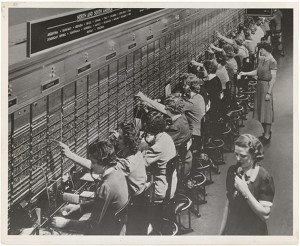
As various clients want various interactions with their social media accounts, I’ve gathered notes on what’s available and how to do it. This is mostly about drawing or embedding content from social media to standalone sites.
For single items, the built-in WordPress functionality oEmbed covers a lot. You simply paste in the URL of the content you want to embed, and oEmbed pulls the appropriate HTML from the source site. This will frequently result in an iframe, of course, so you may wish to visit my post on making iframes responsive.
I have some notes on feeds and specific social media sites, too. Twitter makes it incredibly easy to get whatever kind of feed you want, provided you have an account. Users, hashtags, search terms, any criteria you could reasonably desire. While logged in, simply visit the timeline widget creation page, fill out the form, and grab the code from underneath the preview. It can go in a post or page – in the Text editor view only, not the Visual editor view – or in a WordPress text widget.
For YouTube, note that the embed URL begins with //. This is great for avoiding HTTP vs HTTPS conflicts, but I’ve had trouble with localhost sites figuring out what to do with it and have had to add http: to get the embed to happen. You can embed playlists queued up to any specific video in the list, but unfortunately not to the latest addition dynamically. Ads will still be in place and benefit Youtube and the video owner on Youtube, not the owner of the site where the video is embedded (unless, of course, that individual also owns the video).
While personal Facebook badges have many options, including exporting a photo stream (public photos only), page badges are limited to name, most recent status, current profile picture, and number of fans. Here is the badge page.
If you want to get in deep with Pinterest, there are all kinds of Pinterest-specific data attributes you can add to your images. That article also covers Rich Pins. I haven’t had any clients for whom Pinterest is important enough to put that kind of time into, and there don’t seem to be any plugins to facilitate adding the attributes, but they’re there for you if you do use Pinterest heavily for marketing.
Conversely, you can prevent pinning of your images with a meta tag (in the <head></head> section): <meta name="pinterest" content="nopin" description="Optional message text"> If you don’t set the description attribute the message displayed upon attempted pinning will be “This site doesn’t allow pinning to Pinterest. Please contact the owner with any questions. Thanks for visiting!” Individual images can be disqualified from pinning by adding the attribute nopin="nopin" to the img tag.
Bell Systems switchboard photo found on Wikimedia Commons.